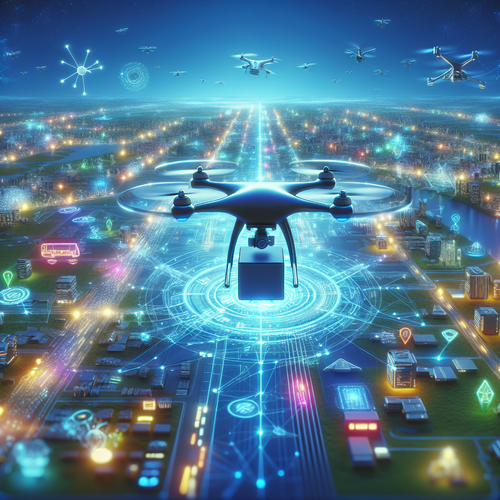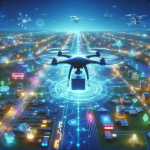
Debut of Autonomous Delivery Drone with Obstacle Avoidance AI
Debut of Autonomous Delivery Drone with Obstacle Avoidance AI
In recent years, the logistics industry has witnessed a transformational shift towards automation, and one of the most exciting developments is the debut of autonomous delivery drones. Equipped with cutting-edge obstacle avoidance AI, these drones promise to revolutionize the way goods are delivered.
Prerequisites
- Understanding of basic drone technology and AI concepts.
- Familiarity with logistics and delivery systems.
- Interest in the future of automated transportation.
What is an Autonomous Delivery Drone?
An autonomous delivery drone is an unmanned aerial vehicle (UAV) designed to transport packages from one location to another without human intervention. These drones can navigate complex environments, avoid obstacles, and deliver goods efficiently and safely.
Key Features of the New Delivery Drone
- Obstacle Avoidance AI: The drone utilizes advanced sensors and AI algorithms to detect and navigate around obstacles, whether they are other drones, buildings, or pedestrians.
- Real-time Data Processing: It can process data from various sensors in real-time, allowing for quick decision-making and adjustments during flight.
- Extended Range: With improvements in battery technology and energy-efficient design, these drones can cover longer distances, making them suitable for urban and rural deliveries.
Step-by-Step Overview of Its Operation
1. Pre-flight Checks
Before takeoff, the drone performs a series of pre-flight checks, including verifying battery levels, testing communication systems, and ensuring all sensors are functional.
2. Launching the Drone
Once checks are clear, the drone can be commanded to take off via a mobile app or automated system. The initial ascent is programmed to avoid nearby structures.
3. Navigating the Delivery Route
Using GPS and onboard maps, the drone follows the most efficient route to its destination while continuously monitoring its surroundings for potential obstacles.
4. Utilizing Obstacle Avoidance
If an obstacle is detected, the AI quickly calculates alternative routes to bypass the obstruction without human input. This ability significantly reduces the risk of accidents.
5. Delivery and Return
Upon arriving at the delivery location, the drone can safely release the package. After the delivery, it autonomously navigates back to its base or the next delivery point.
Troubleshooting Common Issues
- Drone Fails to Take Off: Check battery levels and ensure that the environment is clear of obstructions.
- Delivery Location Issues: Verify that the GPS coordinates are correct and that the landing area is safe.
- Obstacle Detection Failure: If the drone fails to detect obstacles, calibrate the sensors or check for blockages.
Summary Checklist
- Ensure all systems (battery, sensors) are operational before flight.
- Confirm GPS coordinates and delivery address.
- Monitor flight path for obstacles and anomalies.
- Conduct post-flight checks after each delivery.
This autonomous delivery drone equipped with obstacle avoidance AI marks a milestone in our shift towards smarter logistics solutions. By integrating advanced technology into daily operations, the logistics industry can not only speed up delivery times but also enhance safety and reliability.
For further insights into breakthrough technologies that are shaping the future, consider exploring our article on Exploring AI in Autonomous Drone Technology.














